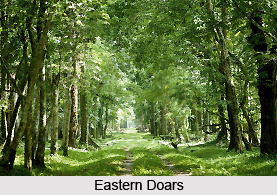 History of West Garo Hills District is veiled in clouds of mystery. The earliest ancestors of the residents of Garo Hills are known to be Meches, Koch Tribe, Kacharis and Chutiyas who are said to have arrived from the north-western parts of the country. Other traditions also assert that the Garos are descendants of people who belonged to Asong Tibergori. Yet another historical tradition claims that the origin of the Garos belonging to Kamrup Plains can be traced to from their forefathers who had migrated from the Himalayan mountain range and approached Gondulghat.
History of West Garo Hills District is veiled in clouds of mystery. The earliest ancestors of the residents of Garo Hills are known to be Meches, Koch Tribe, Kacharis and Chutiyas who are said to have arrived from the north-western parts of the country. Other traditions also assert that the Garos are descendants of people who belonged to Asong Tibergori. Yet another historical tradition claims that the origin of the Garos belonging to Kamrup Plains can be traced to from their forefathers who had migrated from the Himalayan mountain range and approached Gondulghat.
After halting briefly at Gondulghat, they were believed to have proceeded towards a place called Sadiya, from which place they finally reached the northern bank of Brahmaputra River. They then trekked to Amingaon and altered their course to occupy Kamakhya after they had crossed Brahmaputra River. Kamakhya was the region where they settled till the time when the Koches invaded the kingdom of the Garos.
From Gauhati, they are said to have traversed to the external Garo Hills. Innumerable Garos also crossed the north-eastern hills of Garo and arrived in Mymensing in the country of Bangladesh. The earliest immigrants settled at the place termed as Goalpara while the later immigrants resided in Kamrup. Historical evidences prove that there have been gory sagas of battles and violent fights which took place between neighbouring villages or families dwelling in the Western Garo Hills.
 Medieval History of West Garo Hills District
Medieval History of West Garo Hills District
The people of the West Garo Hills consisted of numerable `Nokmaships`, which implies vast expanses of plain lands which are located, near the foothills of Garo. Many renowned `Zamindari` estates were based in these portions of the country which later were modified into complexes. During the age of the Mughals, Garo Hills possessed several estates like Bijini in the Eastern Duars, Mechpara and Habraghat in the district of Rongpur, Kalimalupara, Karaibari, Sherpit and Susang in the district of Mymensing, Bangladesh. The local people of Garos were in regular internal disputes with the local Zamindars of these estates.
Modern History of West Garo Hills District
About the end of the 18th century, the regional tribes of Garo started communicating with the British. This was done after the Mughals lost control of the Diwani of Bengal, due to the efforts of the British East India Company. As a consequence, the large estates of Garo Hills which were once independent were then annexed by the British Empire in India.
However, despite the passage of power from the British to the Mughals, the British did not intend to gain control over the estates of Garo Hills immediately. This occurred because the Zamindars did not experience any interference in the private management of their estates. Political conflicts between the regional inhabitants of Garo Hills and the Zamindars worsened, which compelled the British to take control of the situation. This prompted the steady annexation of the Garo Hills by the British in the year 1873. The district`s very first Deputy Commissioner was Captain Williamson. The Garo district was divided into two districts, namely West Garo Hills and East Garo Hills in October 1879.



















